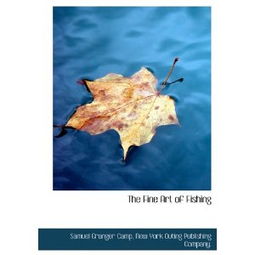Content:
When it comes to the serene and rewarding activity of fishing, the seafront offers an abundant playground for anglers of all levels. Whether you're a seasoned pro or a beginner looking to cast your line into the vast ocean, honing your fishing技巧 (skills) is essential for a successful and enjoyable experience. Here are some expert tips on how to train your fishing skills at the seaside.
Choose the Right Equipment
The first step in mastering seafront fishing is to ensure you have the right equipment. This includes:
- Rod and Reel: Select a rod and reel that are appropriate for the type of fish you're targeting. Lighter rods are ideal for smaller fish, while heavier rods are better for larger species.
- Line: The type of line you use depends on the fish and the conditions. Monofilament is versatile and easy to handle, while braided line offers more strength and sensitivity.
- Hooks: Choose hooks that are the right size for the bait you're using and the fish you're targeting.
- Lures and Bait: Experiment with different lures and baits to see what works best in your fishing spot.
Learn the Basics of Casting
Casting is a fundamental skill in fishing. Here's how to improve your casting technique:

- Practice Your Grip: Hold the rod with a comfortable grip, ensuring your fingers are spaced evenly along the handle.
- Backcast: Start by lifting the rod back, then sweep it forward with a smooth, controlled motion.
- Forward Cast: After completing the backcast, bring the rod forward with a quick, powerful motion to propel the lure or bait into the water.
- Adjust for Wind: If there's a breeze, adjust your casting technique to account for the wind's direction and strength.
Understand Tides and Currents
Tides and currents can significantly impact your fishing success. Here's what you need to know:
- Tide Charts: Study local tide charts to understand the ebb and flow of the tides. Fish tend to be more active during high and low tide periods.
- Currents: Currents can carry your bait away from the fish. Cast into the current to give your bait a better chance of reaching the fish.
Master Baiting Techniques
Baiting is an art form in fishing. Here are some tips:
- Natural Bait: If you're using natural bait, ensure it's fresh and appealing to the fish you're targeting.
- Artificial Lures: When using artificial lures, experiment with different retrieves and presentations to mimic the natural movement of prey.
Patience is Key
Fishing is a patient sport. Here's how to stay focused and maintain your composure:
- Set Realistic Goals: Understand that fishing is about patience and timing. Set realistic goals for the number of fish you hope to catch.
- Stay Calm: Avoid getting discouraged if you don't catch anything right away. Stay calm and keep trying.
Safety First
Always prioritize safety when fishing at the seafront:
- Weather Conditions: Check the weather forecast before heading out. Avoid fishing during severe weather conditions.
- Safety Gear: Wear a life jacket if you're fishing from a boat or in deep water.
- First Aid: Carry a first aid kit and know basic first aid procedures in case of an emergency.
Join a Fishing Community
Connecting with other anglers can provide valuable insights and tips. Join local fishing clubs or online forums to share experiences and learn from others.
By following these tips and dedicating time to practice, you'll be well on your way to mastering the art of seafront fishing. Remember, the key to success is patience, persistence, and a willingness to learn. Happy fishing!












